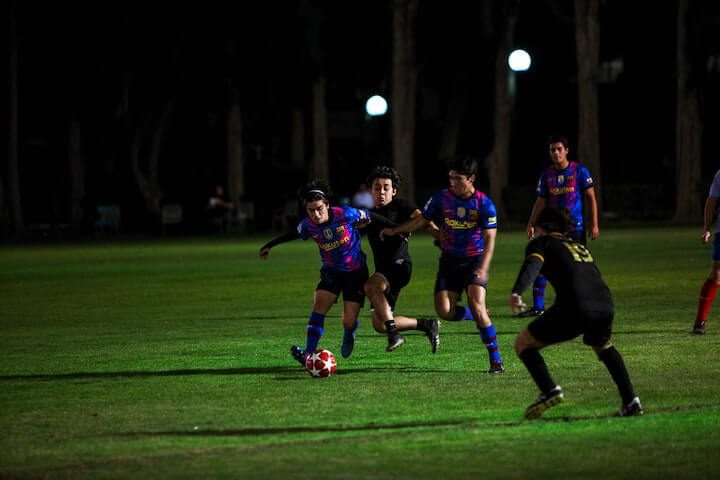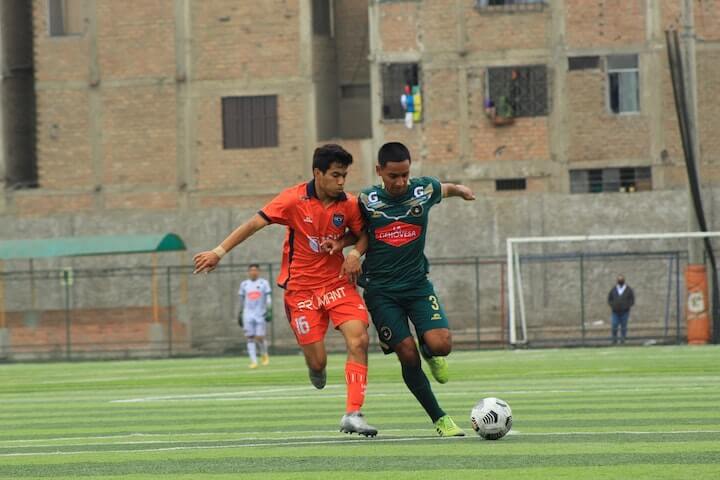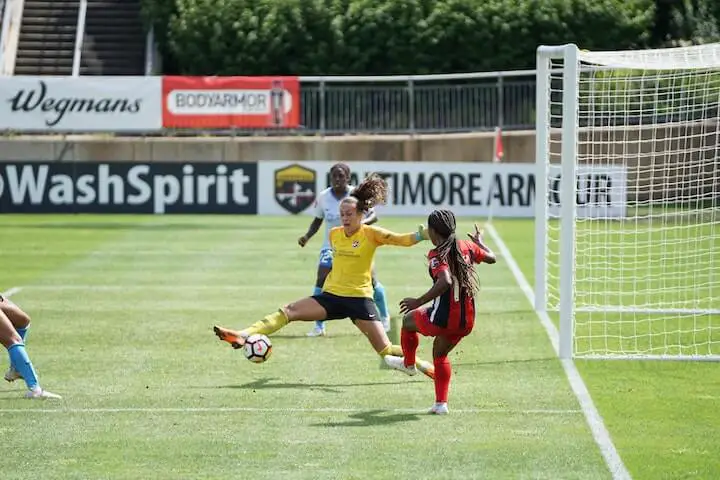Why Do Soccer Players Wear Bras? (The Honest Answer)
In recent years, you may have noticed male athletes starting to wear bra-like devices.
These are worn during many games and training sessions.
Although many soccer players do make headlines for their questionable fashion choices...
These bra-like vests ARE NOT worn for aesthetics.
They are wearable technology that track and monitor key elements of athletic performance, such as heart rate, distance covered, and top speeds.
Data technology and analytics have become increasingly important in the game, helping players, coaches, and strategists to gain an edge on the competition.
So if you've been wondering why soccer players wear bras, they're actually GPS tracker vests.
What are GPS Tracker Vests?
GPS tracker vests are sports technology equipment, typically worn underneath a player’s jersey.
The key components of the vest are the GPS pod, located at the back...
While the heart rate monitor that wraps around the chest.
These vests are specifically designed to fit snuggly and comfortably while offering protection.
They cover the vital parts of the body for recording health and fitness metrics, like the heartbeat.
This positioning is also the safest place for players engaging in contact sports, like soccer, basketball, or even American Football.
The vest material is usually made from durable yet breathable materials so players can wear them directly on the skin or over a thin layer.
While they look and sound relatively straightforward to use, many GPS vests are extremely high-tech and can capture over 1,000 data points per second.
These pertain to players’ work rates and performance.
Coaches and players can use specially designed applications or software to analyze the date, providing key insights into several important categories.
Let’s take a closer look at the data these devices can provide.

Acceleration and Deceleration
Soccer players run more than professionals in virtually all other team sports.
Players, on average, cover around 7 miles per game through a combination of sprints, casual jogging, and sharp movements.
Accelerating and decelerating are integral to performing at a high level.
GPS trackers use satellite technology to measure the number of sprints players make in games and training, and also provide details on how fast they cover ground.
Teams can use the date gathered here to determine an individual or a team’s ability to press or make certain runs.
It also gives coaches definitive information on whether or not their team can successfully implement specific strategies, formations, or tactics.
After games, analysts provide concise breakdowns on accelerations and decelerations, identifying the strengths or weaknesses of individual players.
Distance Covered
Distance covered isn’t necessarily a defining metric when it comes to soccer.
However, it gives coaches an indication of the output of their players and also helps them gauge the physical limitations within the team.
If a team is consistently getting overrun and losing games, they may not have the right fitness levels, or the system might not be suitable.
Analyzing the running statistics alongside other data can be extremely useful in determining player and formation selection, as well as tactics and shape.
Heart Rate (BPM)
Technology, like GPS tracker vests, has changed how the modern player trains.
A heart rate monitor allows players to track and analyze heart rates before, during, and after training or games.
Heart rate, measured in beats per minute (BPM), not only shows how hard a player is working, but also indicates recovery and fatigue levels.
If a player demonstrates unusual levels of fatigue after a session, they may require additional rest and recovery.
In many cases, this may involve adjusting the player’s diet or caloric intake, or scaling back the intensity of training the next day.
Heart rate analysis can help keep players in optimal condition and reduce the risk of injury or overtraining.

Speed
Speed is an important developmental indicator that can provide insight into a player’s physical condition.
Soccer analysts can use top or average speeds in several beneficial ways.
For example, if a speedy winger is no longer getting into dangerous positions in the final third, or reaching close to their maximum speed in games, there could be a correlation.
This may suggest that a recent formation change isn’t bringing out the best in this player, or it could suggest that the player is compensating for a muscle injury.
After each game or training session, analysts can break down every run, dissect the speeds, and find ways to use this data to the team’s advantage.
Red Zone Data
Red zone data is paramount to managing player fitness and ensuring each training session reaches the desired levels of intensity.
Many professional or collegiate-level teams grade sessions using a traffic light system:
Green - A light session that may involve active recovery and ball work the day after a game.
Amber - Represents a moderately intense session, that may include positional play, set-piece practice, and small-sided games to prepare for an upcoming match.
Red - An intense training routine that pushes players to their limits in terms of cardiovascular activity and muscle activation.
The coaching staff can track, monitor, and analyze individual performances, enabling them to gauge the physical levels of each player.
This helps them to ensure fitness and performance levels are where they need to be at various stages throughout the season.
The data can also inform coaches on future planning and training needs.
When dealing with injuries, collecting data is essential in orchestrating recovery plans, gauging a safe return date, and determining how many minutes a player is capable of.
Live Game Data
Teams use tracker vests to provide in-game data to help coaches make decisions during a game.
The satellite links provide rapid data transfers so receivers can interpret the information as it comes in, informing them about player performance and trends that may be difficult to perceive by the eye.
It’s estimated that 75% of Premier League teams use GPS tracker vests, showing the importance of this technology.
While soccer is a relatively simple sport, it is ultimately decided by fine margins.
Technology and data analysis are fast becoming key differentiators between high-level teams.
Even among amateur players, GPS trackers are cost-effective tools that can accelerate growth, monitor performance levels, and minimize the risk of injury.

Conclusion
So, why do soccer players wear bras (or bra-like equipment)?
As you can see, these vests are far more than fashion accessories.
GPS trackers are not just useful for compiling individual statistics or measuring select statistics.
They compile a broad range of information that teams and players can use to give a broader picture of player and team performance.
Clubs use GPS devices and other technologies for talent identification, scouting, conditioning, and a range of tactical decisions.
Soccer has been naturally resistant to data analysis and statistics over the years...
But the development of technology like tracker vests are now opening up new and more relevant analysis models that are sure to have a tremendous impact on the progress of the game.

